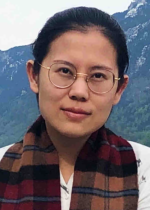The PhD defence and trial lecture are fully digital and streamed using Zoom. The host of the session will moderate the technicalities while the chair of the defence will moderate the disputation.
Trial lecture
Friday 28 January, 10:15-11:00, Zoom
Supervised machine learning applied in interpretation of geological features in seismic data – weak versus full supervision
Conferral summary (in Norwegian)
Seismiske data brukes til å avbilde undergrunnen, men kan ikke brukes direkte da rådata fra feltundersøkelser inneholder en blanding av ulike refleksjoner og støy. Å separere det ønskede refleksjonssignalet fra støy ved hjelp av konvensjonelle metoder er både beregningskrevende og tidkrevende, og krever omfattende manuell parametertesting. For å automatisere og redusere kostnadene til denne prosessen foreslår denne avhandlingen en rekke maskinlæringsløsninger som har vist seg verdifulle for industriell prosessering av reelle data.
Main research findings
Popular scientific article about Sun’s dissertation:
Deep learning-based seismic data processing for attenuation of interference noise and deblending in the shot domainain research findings
During seismic acquisition, reflected waves from the subsurface are recorded by sensors in seismic cables in the water column. The measured data are used to create images of the subsurface for the exploration of natural resources. To achieve good-quality images, unwanted energy needs to be separated, which is an essential task in seismic data processing. Historically, a tailored physics-based workflow consisting of multiple procedures would be implemented. This is usually costly in terms of manpower and use of computing resources.
To enhance processing automation and reduce costs, this thesis has studied deep learning to solve two fundamental problems in seismic data processing. The first is the removal of noise from other seismic surveys, termed seismic interference attenuation. The second is the so-called deblending, i.e., separating overlapping records caused by an increased shooting rate in our own survey to improve acquisition efficiency and/or data density. Also, some techniques to further develop the processing quality of the data-driven deep neural networks have been proposed. The latest iteration of our deep learning algorithms now delivers similar results to the best available conventional physics-based algorithms at a fraction of the compute time. This represents a significant step forward compared to state-of-the-art seismic data processing.
Photo and other information:
Press photo: Jing Sun, portrait; 500px. Photo: Private
